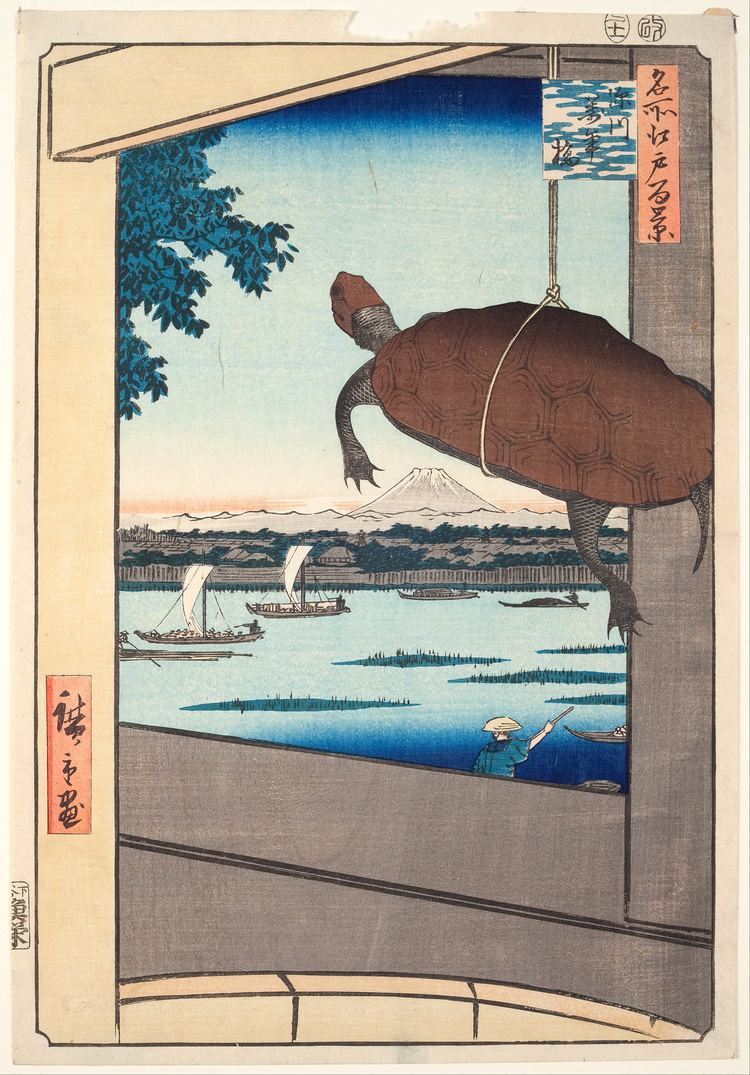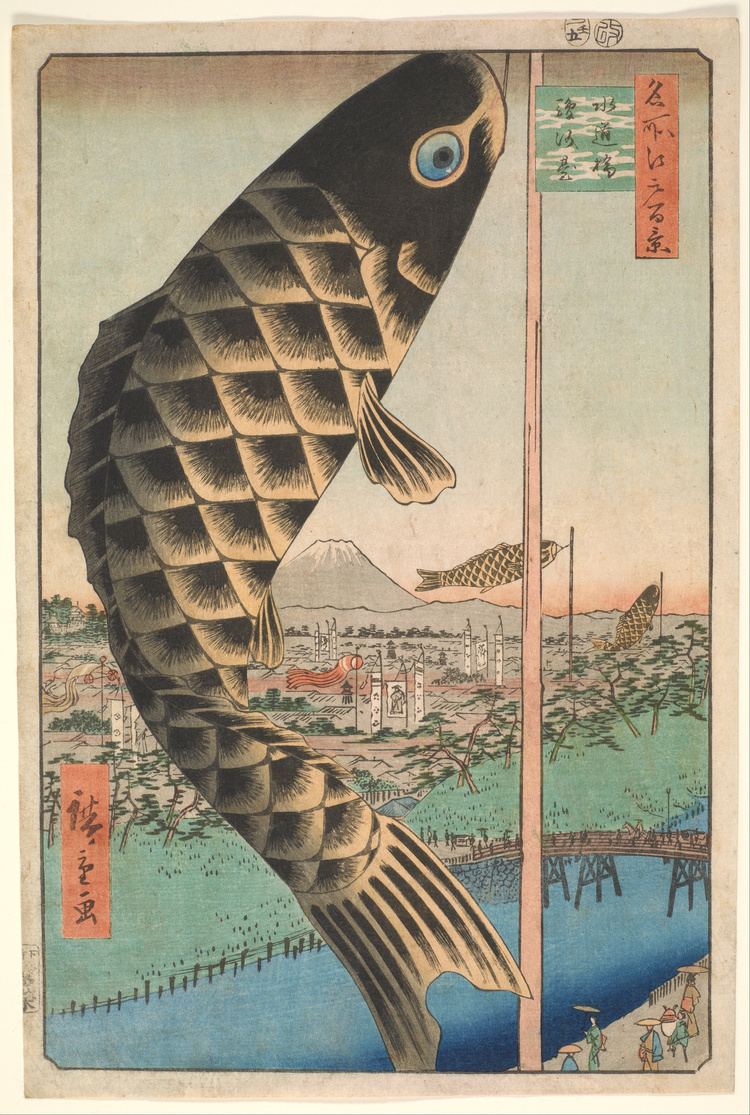Year 1856–58 | ||
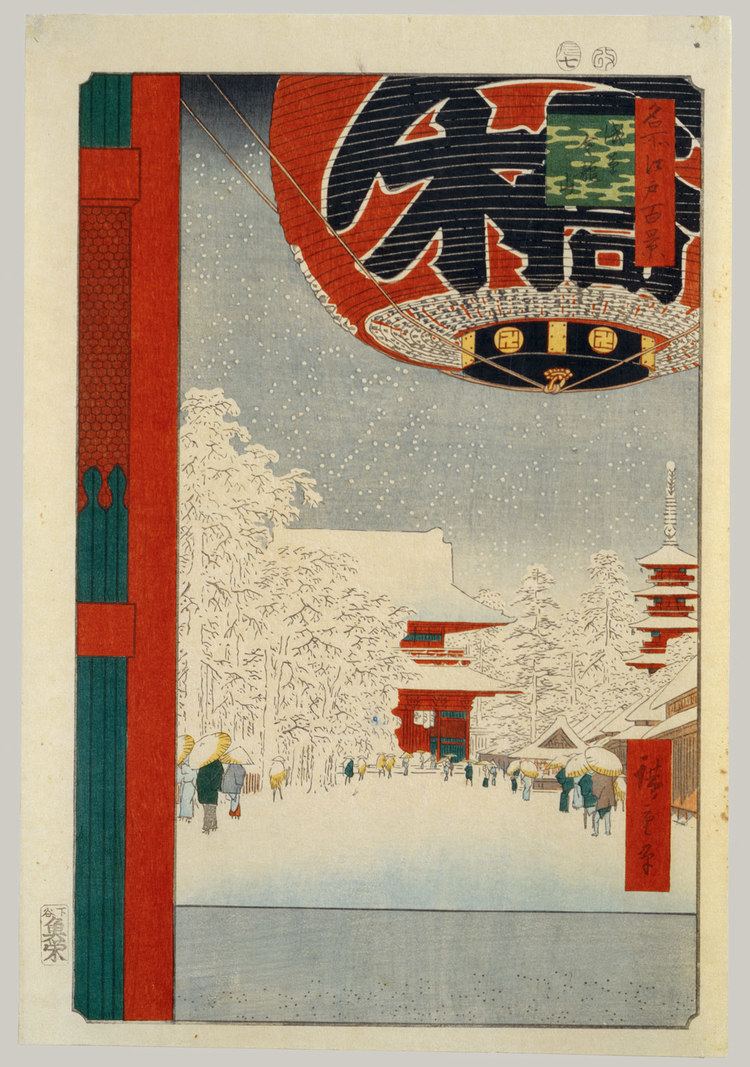 | ||
Hiroshige one hundred famous views of edo published by taschen
One Hundred Famous Views of Edo (in Japanese 名所江戸百景 Meisho Edo Hyakkei ) is a series of ukiyo-e prints begun and largely completed by the Japanese artist Hiroshige (1797–1858). The prints were first published in serialized form in 1856–59, with Hiroshige II completing the series after Hiroshige's death. It was tremendously popular and much reprinted.
Contents
- Hiroshige one hundred famous views of edo published by taschen
- Hiroshige one hundred famous views of edo
- History
- Key
- References
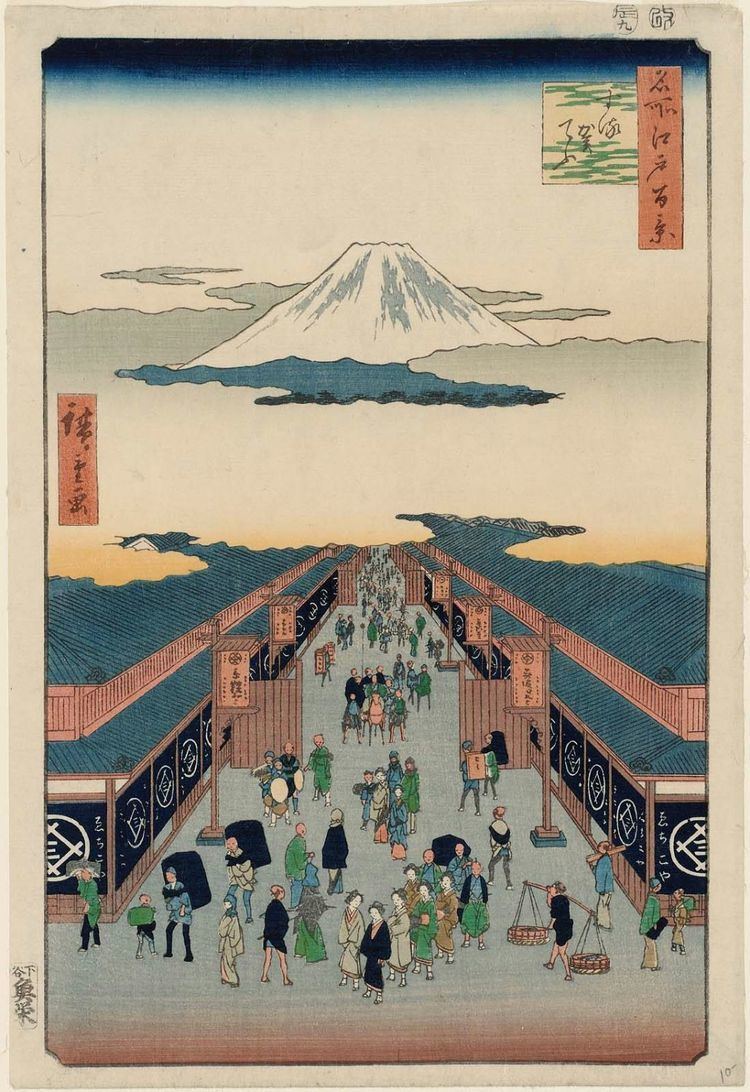
Hiroshige one hundred famous views of edo
History
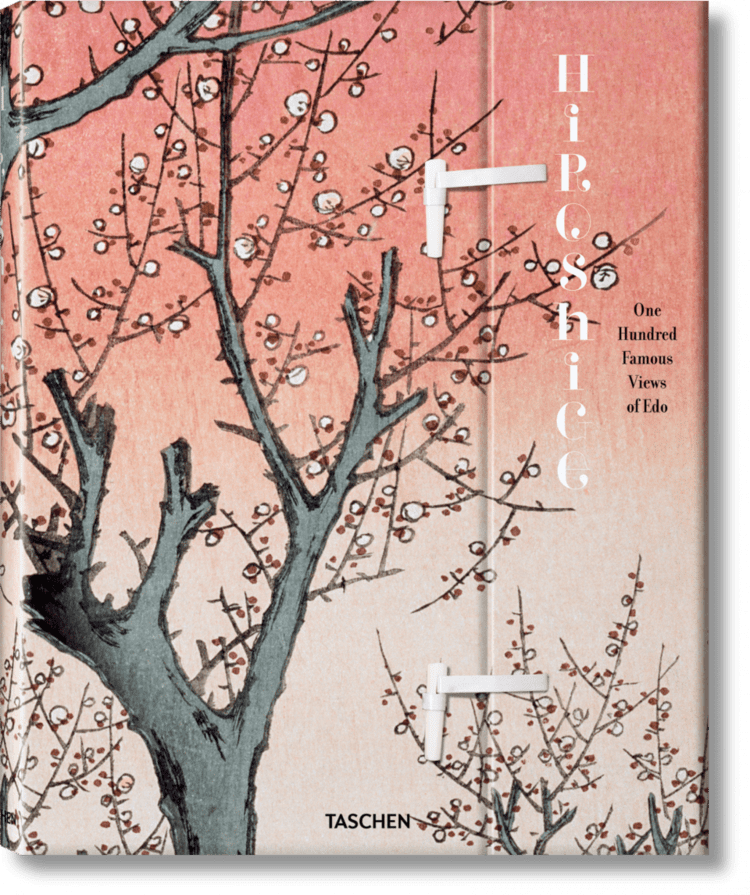
Hiroshige painted in the style of the Utagawa school, a 19th-century popular style in woodblock prints, much favoured during his lifetime. Increasingly large series of prints were produced. This trend can be seen in Hiroshige’s work, such as The Fifty-three Stations of the Tōkaidō and The Sixty-nine Stations of the Kisokaidō .
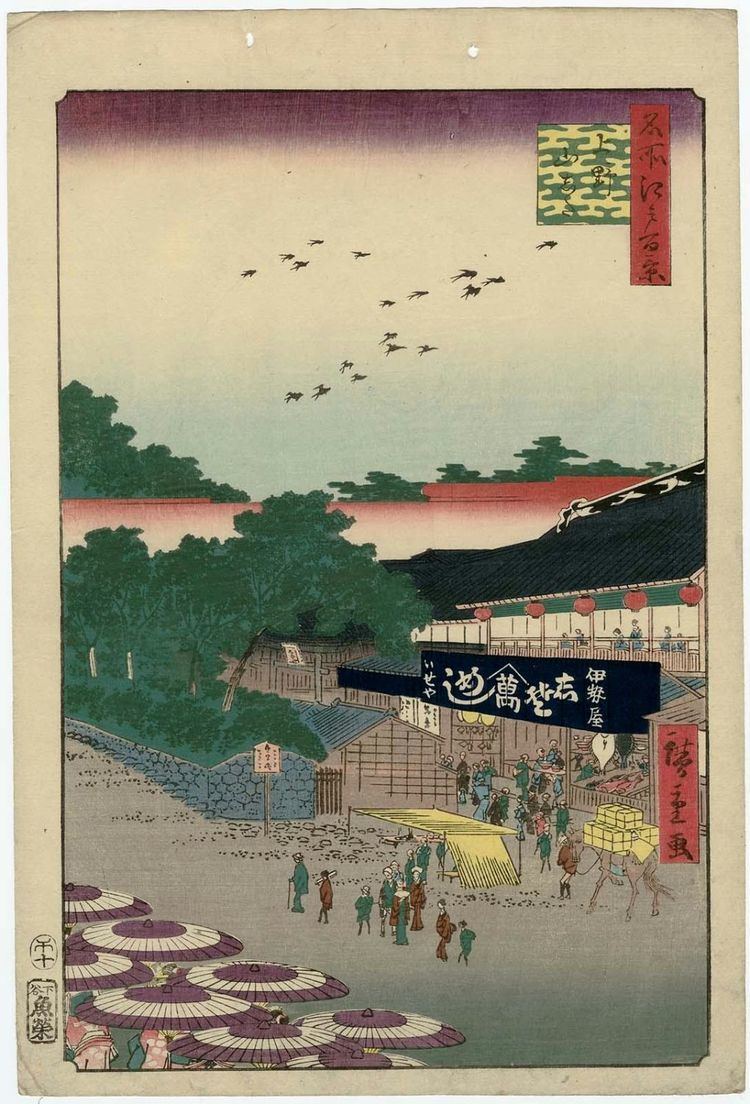
Many publishing houses arose and grew, publishing both books and individual prints. A publisher's ownership of the physical woodblocks used to print a given text or image constituted the closest equivalent to a concept of "copyright" that existed at this time.
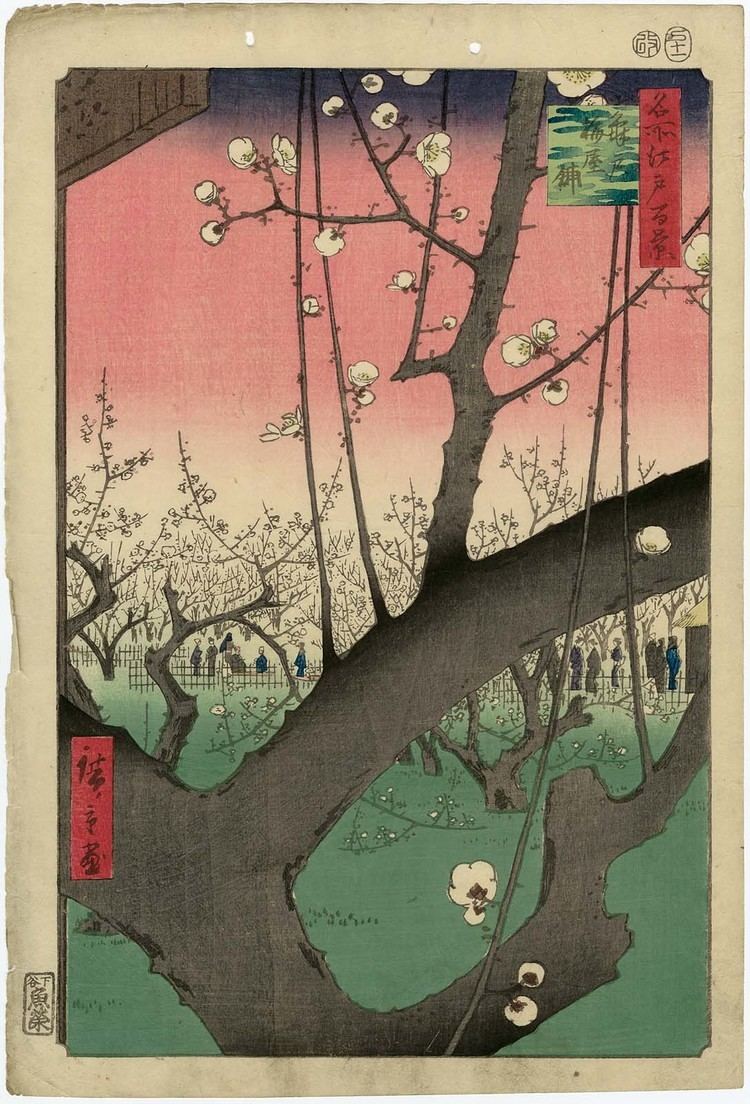
Woodblock prints such as these were produced in large numbers in 18th- and 19th-century Japan, created by artists, block cutters and printers working independently to the instructions of specialist publishers. Prints such as these were called ukiyo-e, which means 'pictures of the floating world'. This world was one of transient delights and changing fashions centred on the licensed pleasure districts and popular theatres found in the major cities of Japan.
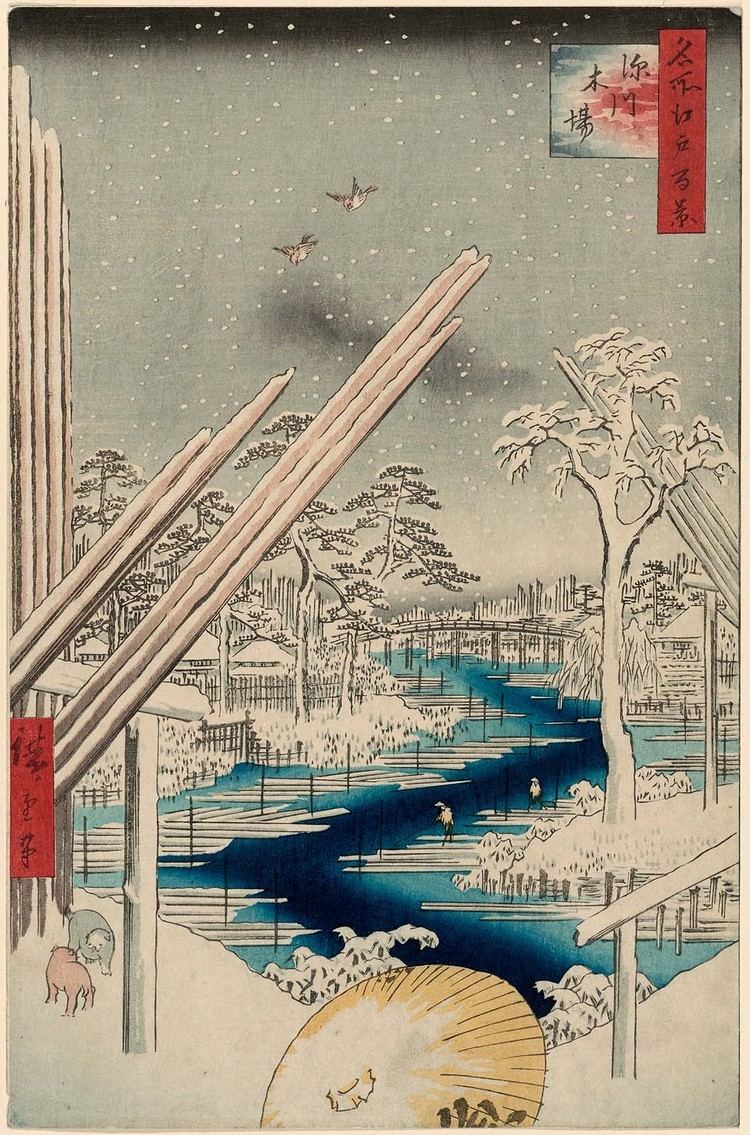
In the years 1829–36, a seven volume illustrated guidebook Pictures of famous places of Edo (江戸名所図会, Edo meishō zue) was published. It was begun by Saitō Yukio (1737–1799) in 1790 and illustrated very accurately by Hasegawa Settan (1778–1848). The pictures and text describe the important temples and shrines, but also the famous stores, restaurants, tea-houses etc. of Edo as well as the Sumida river and its channels and surrounding landscape.
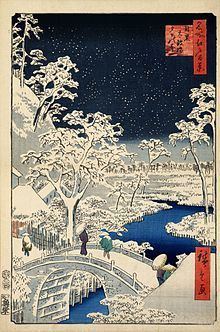
Hiroshige, in several cases, makes use of this guide for his series of colour prints (s. below and within the list). It is a work that inspired a number of Western artists, including Vincent van Gogh, to experiment with imitations of Japanese methods.
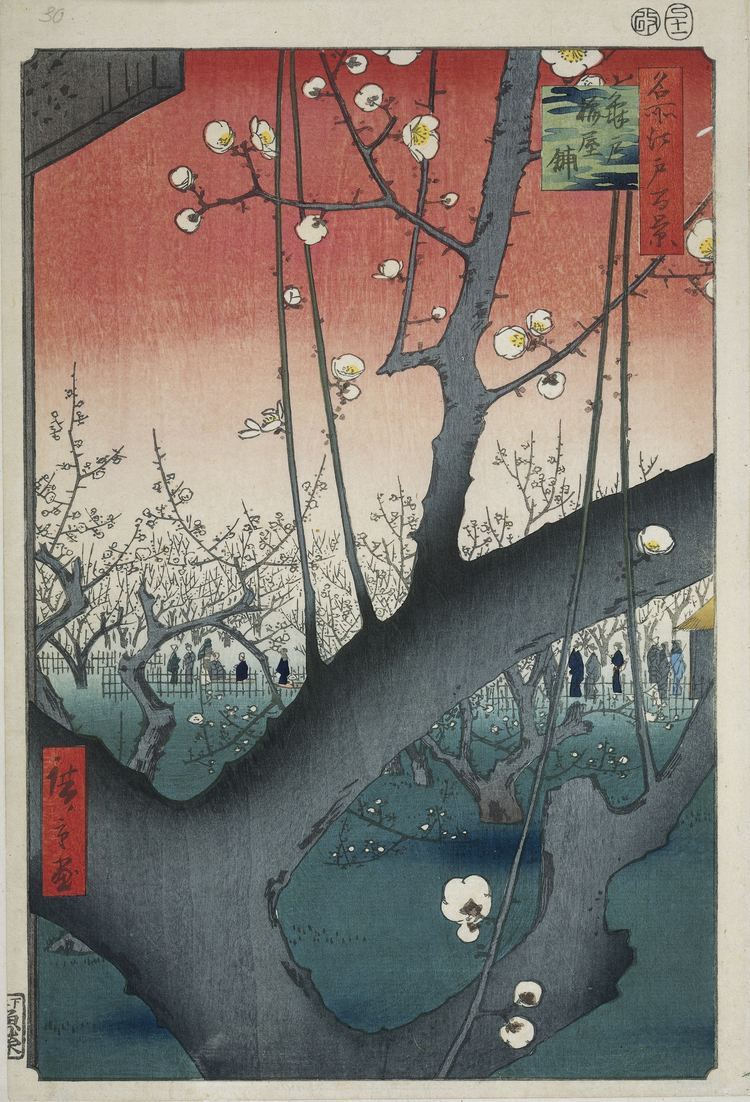
The series uses a vertical format which Hiroshige pioneered in his preceding series, Famous Views of the Sixty-odd Provinces, and was a departure from the horizontal format used in his previous major print series.
Key
